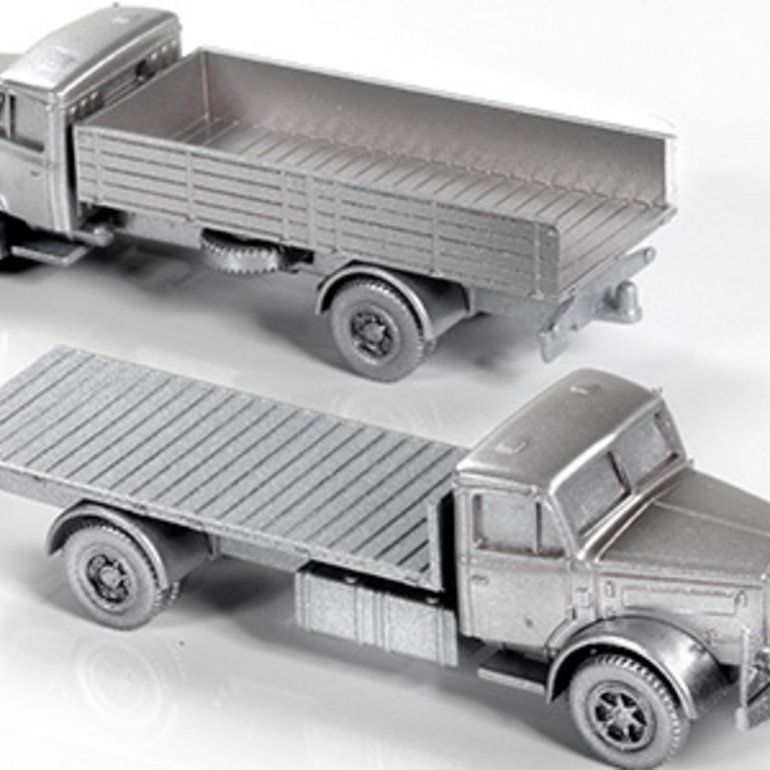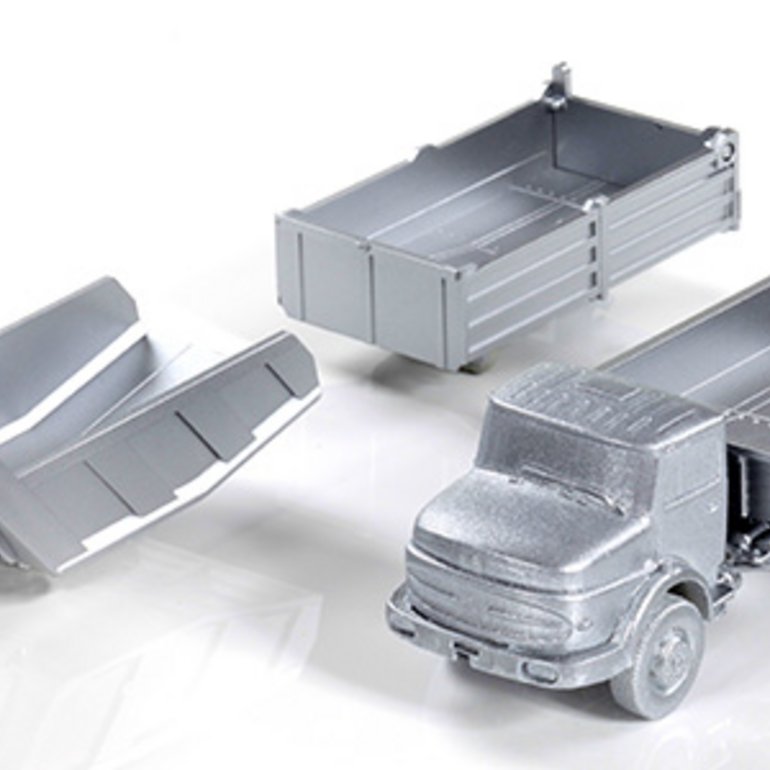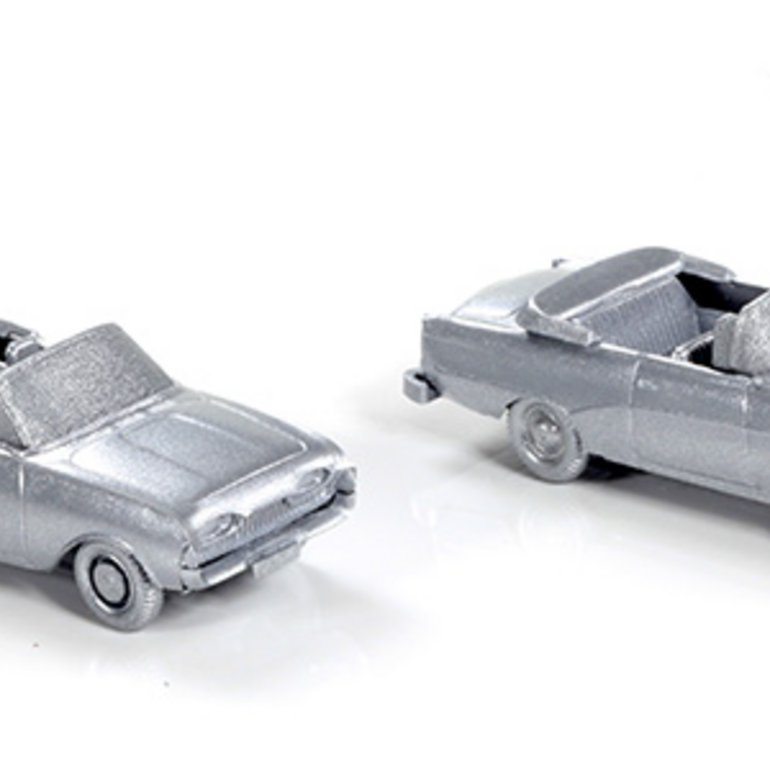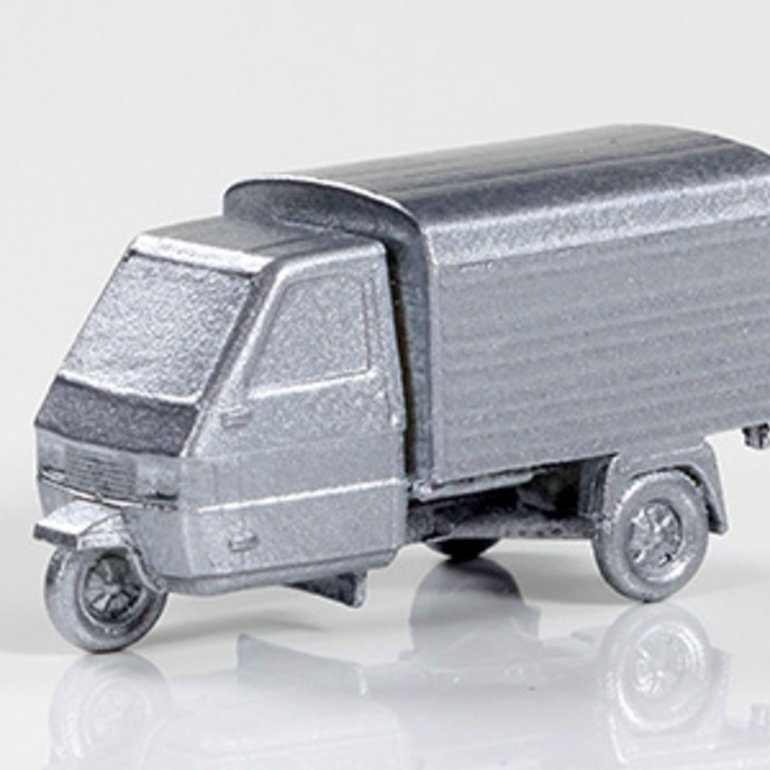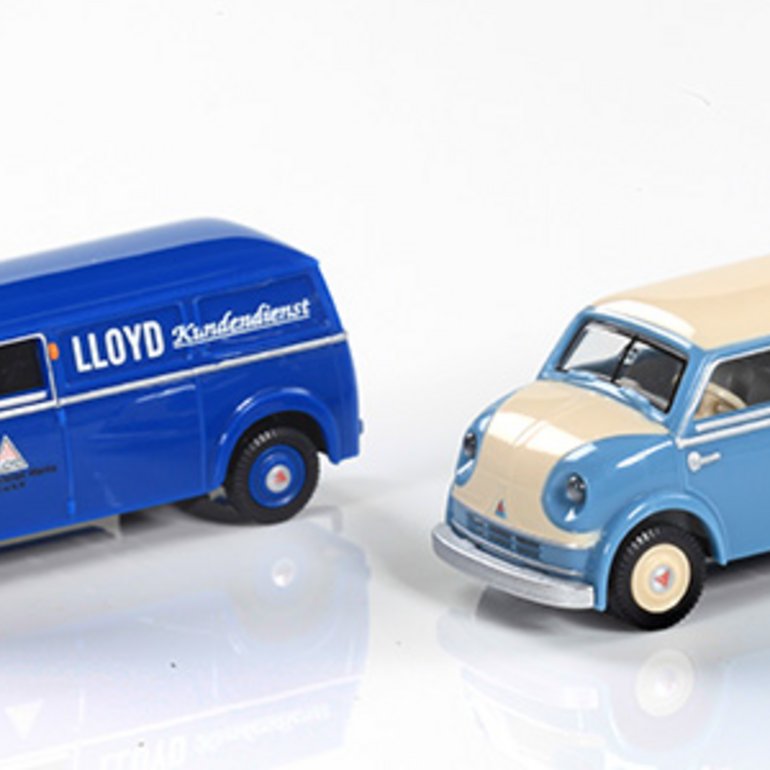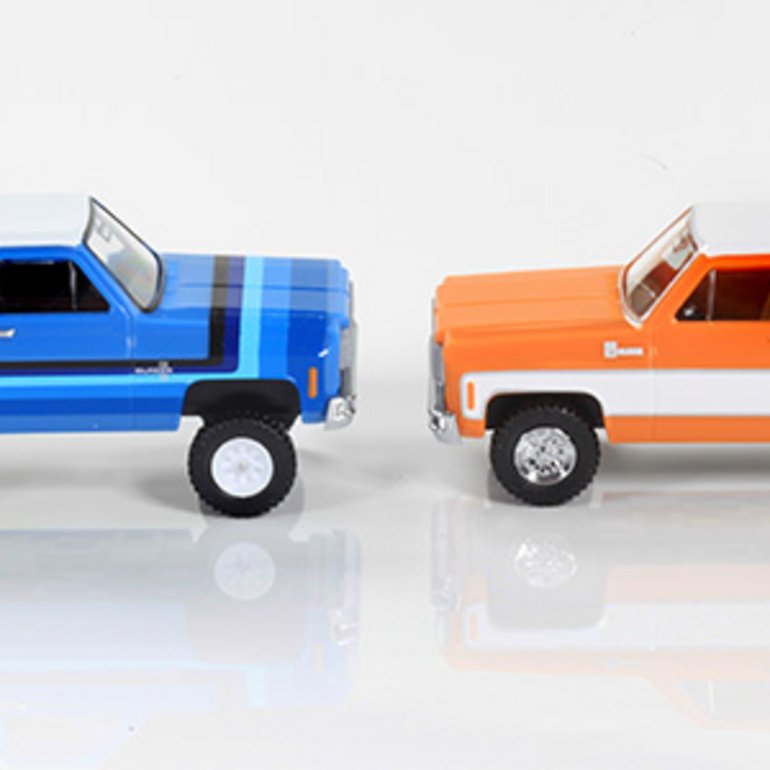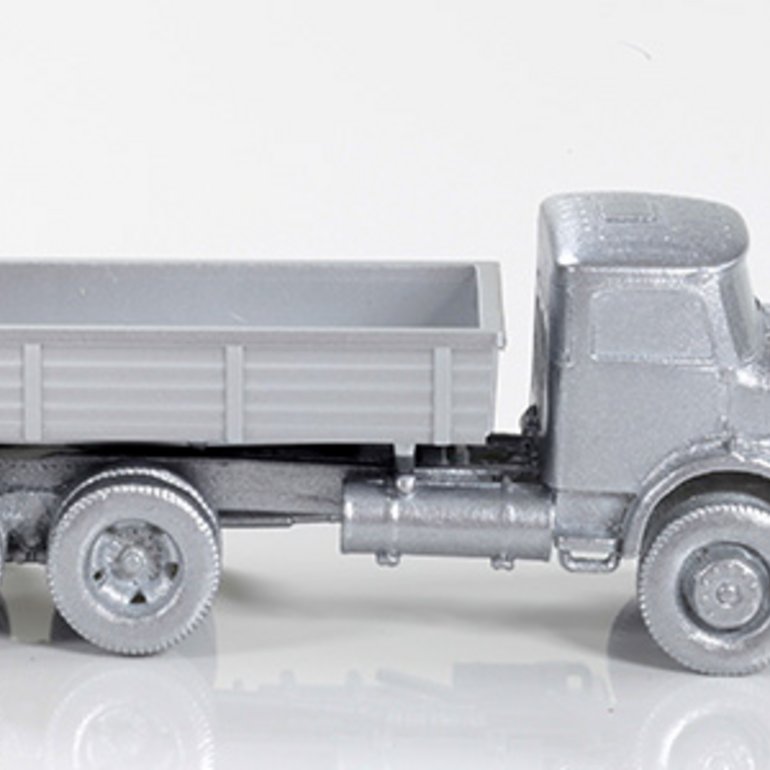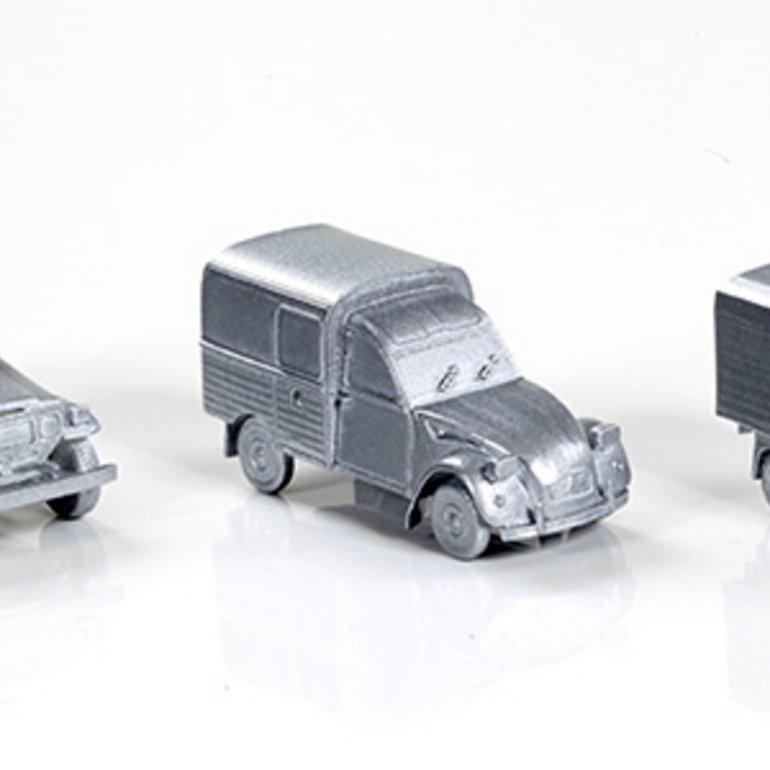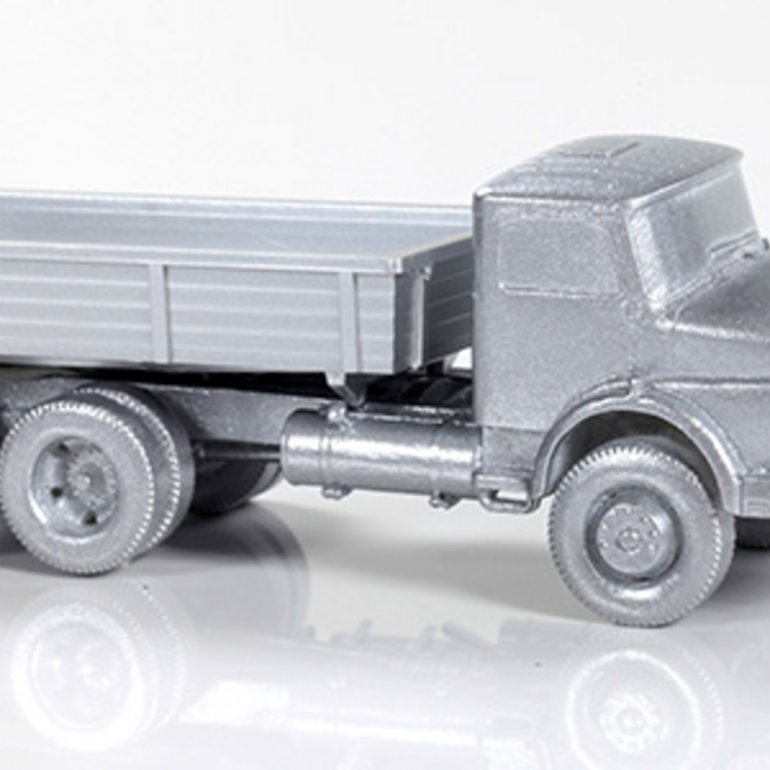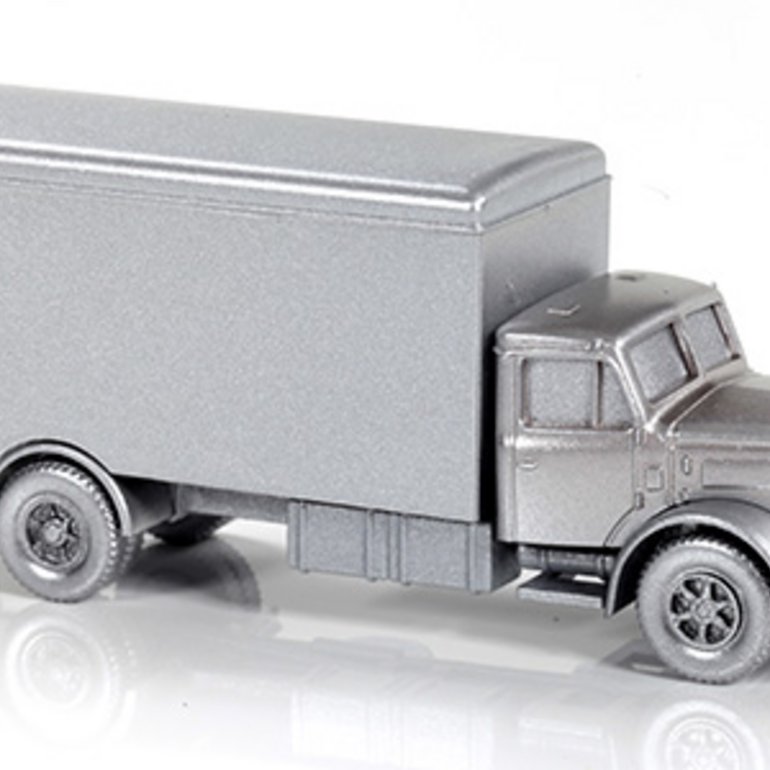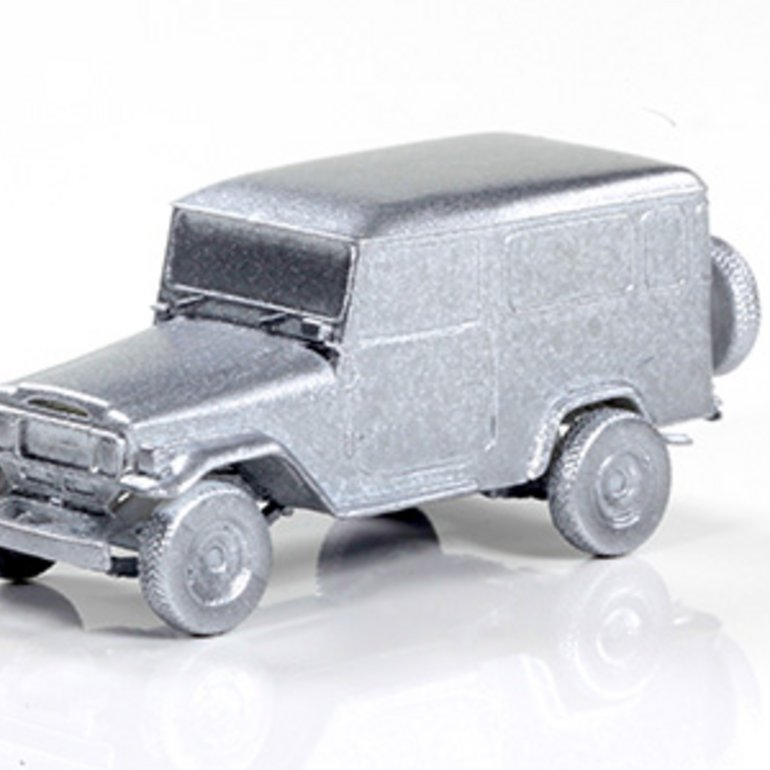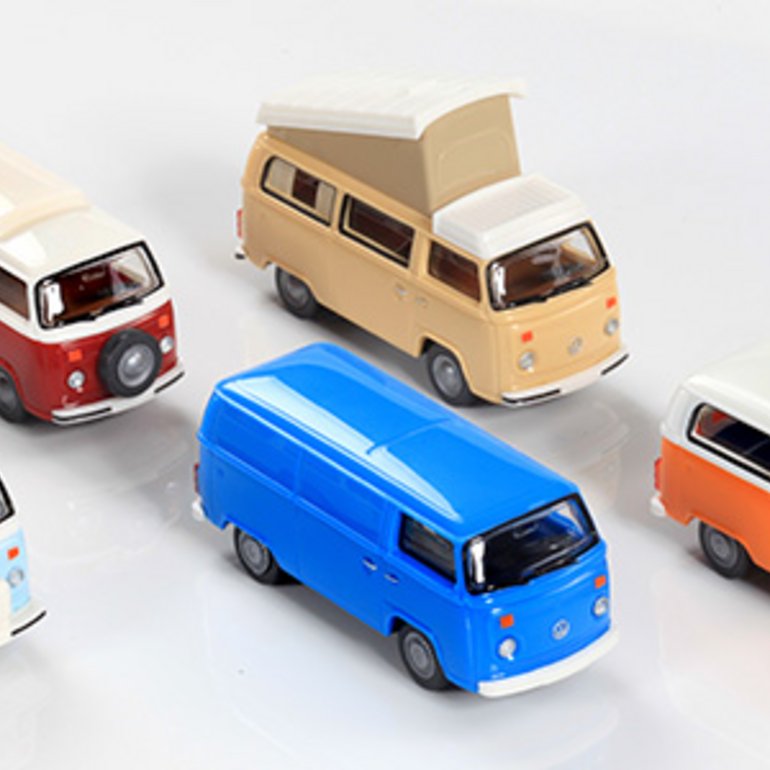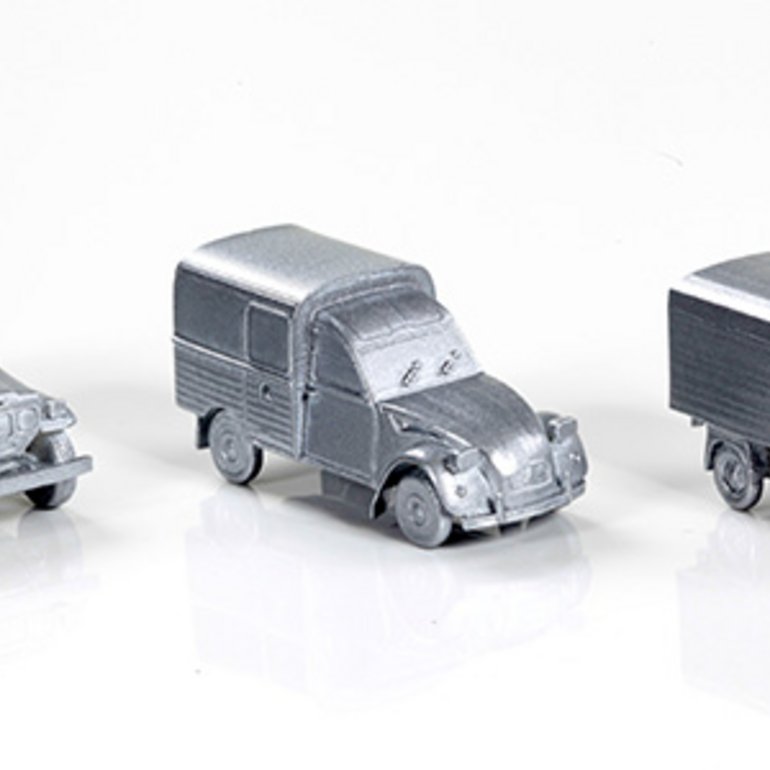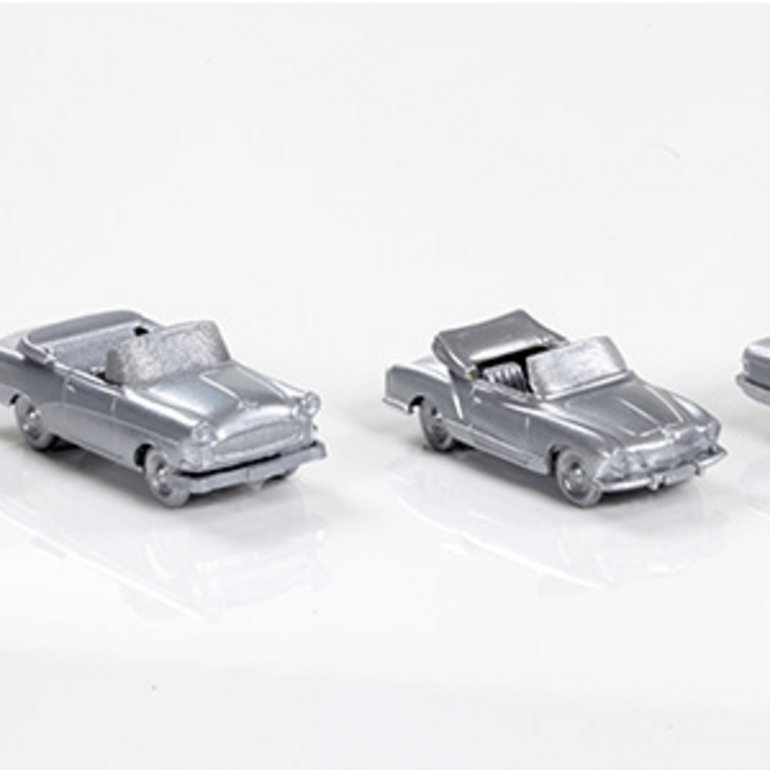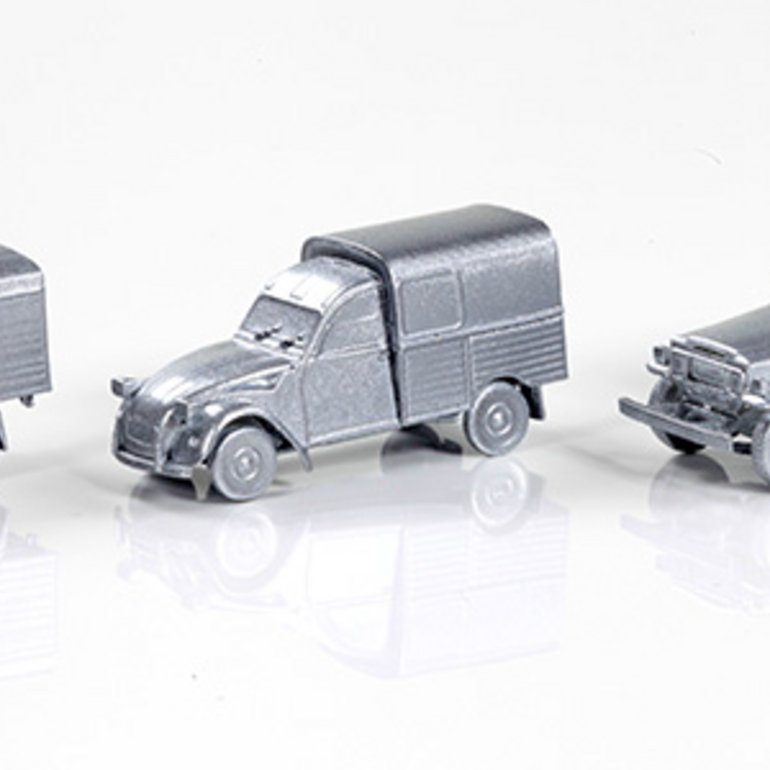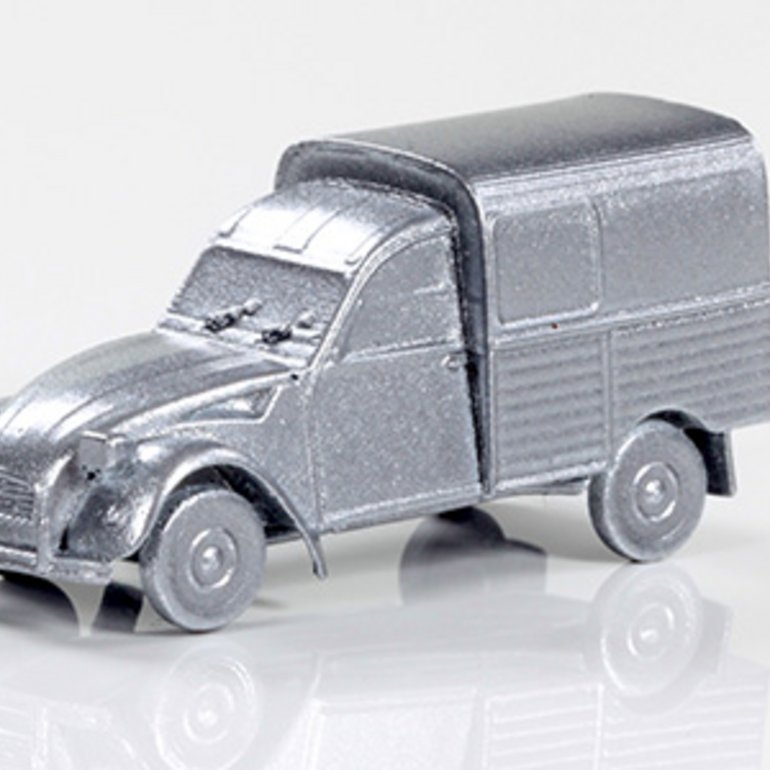- Teensy, yet sublime: Ape from Piaggio with flatbed and box
- French flair with the Citroën 2 CV box van
- All-wheel classic from Japan: Toyota Land Cruiser
- Henschel HS 140 has been given a new truck chassis
- Four legendary convertibles are making their début
WIKING uses 2025 to spotlight some sought-after classics – from small to large and, naturally, on the 1:87 scale. The filigree Ape from Piaggio is just as much part of this select circle as the stunning Mercedes-Benz short hood. The Toyota Land Cruiser, the “duck” from Citroën with box superstructure and the Henschel 140 with tractor-trailer chassis complete the range of new moulds at the 2025 Nuremberg Toy Fair. And, as the Economic Miracle era also made automotive history by virtue of its classy convertibles, WIKING will release four top-down cars in the course of the year. For years, the traditional model makers have been following this approach of continuously updating the product range in a bid to keep their selection of automotive milestones fresh and to enhance it in a meaningful way. The preceding product year already managed to inject new impetus into the portfolio by combining new moulds with miniature model upgrades that were predominantly aimed at tying projects and theme cycles to their authentic originals. This same approach will be pursued in this product year, thus ringing in the second half of the decade. Today, more than ever, WIKING's way to success lies in their ability to build a bridge from the automotive past to the present. Classics are just as integral to this success as modern classics, as long as they meet the desires of the ardent collectors' community of the WIKING brand. Simultaneously, WIKING is nurturing the growth of an attractive future range of automotive milestones.
Italian classic: Ape from Piaggio with flatbed and box
Against this background, an evolution has been taking shape for over three decades in the philosophy of Germany's oldest 1:87 car model brand, which is also lending a model-making future to the signature vehicles that left their mark on the automotive history that followed World War II. It is therefore only logical for the great world of small models to be designed such that it remains true to the original and holds an abundance of fascination. One prime example is the Ape by Piaggio, the Italian tricycle that is ubiquitous on the streets and squares of our neighbour to the south. The prototype WIKING chose for their Ape TM model was built from 1982 and had a bigger size than its predecessors plus a longer wheelbase. Redeveloped from the ground up, the vehicle was characterised by an increased payload and a greater variety of transport options. The two-stroke engine had a displacement of 218cc and was housed underneath the loading platform. The Ape TM was available as a flatbed, box and tipper vehicle. The itty-bitty transport classic also managed to produce respectable sales figures and a long production period of 34 years in Germany - thanks to the lack of competition from domestic manufacturers. The traditional model makers at WIKING devoted their design expertise both to the popular flatbed model and the box version of the vehicle. This gives rise to the well-founded expectation of attractive miniatures modelled after authentic originals.
Citroën 2 CV box van – the “duck” clad in corrugated sheeting
No less attractive is the box van based on the French “duck”, which WIKING has miniaturised as a 1:87-scale model companion to the legendary rocking student vehicle of the sixties and seventies. Those familiar with the original produced between 1951-1977 know how attractively the model of this future French classic will fill the gap still open in the selection on this scale. Aside from fitting the description of the legendary “duck”, the Citroën 2 CV box van bears a look that closely resembles that of the Citroën HY, which WIKING already implemented a few years earlier. Also worth mentioning: In recent years, the traditional model makers have repeatedly created true-to-scale miniatures of models that would hardly have had a chance at the time the originals were produced. WIKING founder Fritz Peltzer simply saw the automotive world of his lifetime with different eyes.
Popular Toyota Land Cruiser of the 1960s and 1970s
The Toyota Land Cruiser will soon join the ranks of other all-terrain vehicles, which are universally esteemed and now subsumed under the term SUV. This addition will bring to the selection a new big all-wheel drive classic that has been widely distributed throughout Europe and found many buyers in Germany as well. The Land Cruiser was somewhat regarded as the Japanese Land Rover. It was reputed as rugged and capable of taking a beating when the path led off the road and into terrain. 1960 witnessed the introduction of the J4’s prototype, which succeeded the J2 and was produced until 1984. The six-cylinder petrol engine produced 145 hp, and the empty weight was between 1.5 and 1.8 tons - depending on the superstructure. A later version that offered the option to switch the all-wheel drive off also made the Land Cruiser a household name in Germany after 1977. The compact version with short wheelbase is already undergoing the miniaturisation process. This addition lets WIKING offer a more than presentable range of all-drive vehicles.
Favoured Economic Miracle classics become convertibles
The ongoing popularity of the recreational passenger vehicles of the Economic Miracle era has encouraged WIKING to continue with the project of convertible classics, which had begun earlier with individual types of classics. Based on their closed-body counterparts, all of these appealing convertibles will receive upgrades in the form of already existing interiors, open folding roofs and newly developed front window glazing. Planned are convertible versions of the Opel Rekord '57, Ford 17M, Karmann Ghia, and Mercedes-Benz 350 SL.
Heavy Mercedes-Benz short hood is approaching
When looking at wish lists of the most desirable lorry classics, one prototype routinely takes the top spot. It is the legendary bonnet truck made by Mercedes-Benz, the omnipresent heavy goods lorry on the construction sites of the sixties and seventies. Distinguished by its wide radiator grille, the short hood will initially be miniaturised by WIKING as a construction vehicle with the common three-axle chassis, allowing for a great number of superstructures. The series is realised with a raised windscreen and headlamps integrated into the bumper, which is in keeping with the vehicle at the time it was produced between 1967 and 1985. There is no doubt that this legendary heavy goods lorry has long been a particular favourite among WIKING fans, not least because it is the visual counterpart to the widely known short hood.
Model series of the Henschel HS 140 is expanded by a road train
Crafted from new WIKING moulds, the tractor unit of the Henschel HS 140 from 1950 is given a purposeful addition - with a two-axle chassis. The stunning semi-trucks released so far with great success have taken the hearts of their beholders by storm. Naturally, these new 1:87-scale trucks will boast the same intricate driver's cab with true-to-the-original engravings of Henschel star and body beads. Various superstructures are available. These include the traditional flatbed as well as the plank bed plus box body. The family of WIKING classics has been grown by another epoch-defining member. With the Henschel HS 140, the lorry makers from Kassel put their first horsepower flagship of the post-war era on the road – naturally, as a semi-truck and as a classic road train. WIKING has thus pulled off the feat of completely redeveloping the chassis on the 1:87 scale.
2024 New items are raring to go
The delivery of the new items presented in Nuremberg 2024 was unfortunately delayed. Now almost all the models are ready and variants of these new items will be announced from February onwards every month. Here a first look at versions of the Chevrolet Blazer K5 and Lloyd LT as well as the van legend T2b, which will find its way into the range as a box van, bus and in different camping versions.
The flatbeds and the Henschel HS14 will also be equipped with attractive versions and will be gradually presented to the range.


